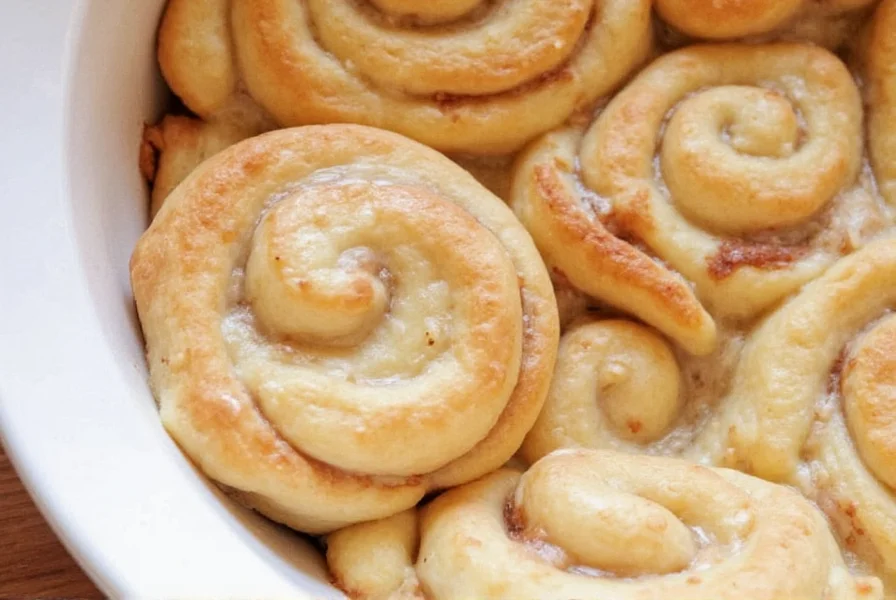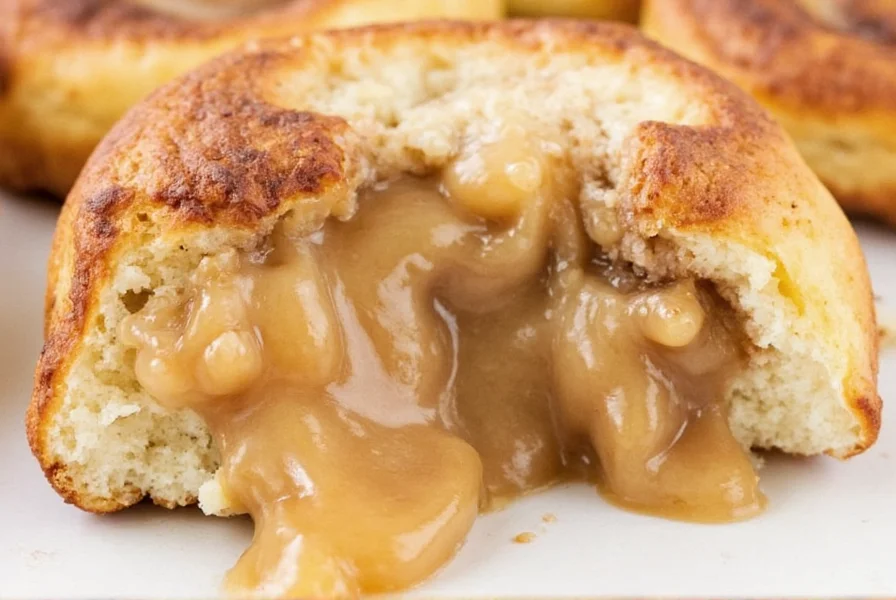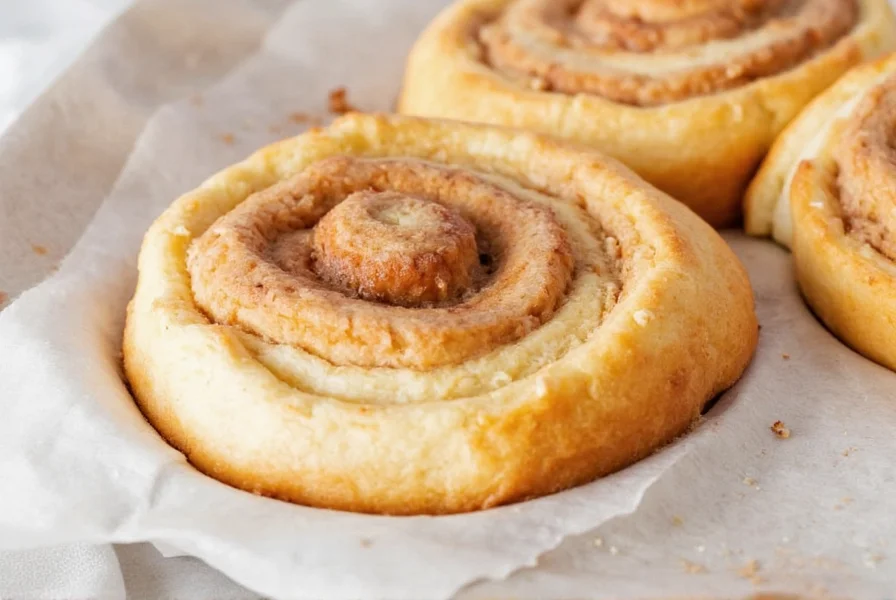Creating the ideal cinnamon filling for cinnamon rolls is simpler than most home bakers realize. This foundational component makes or breaks your final product, determining whether you'll achieve that signature swirl of sweet, spicy perfection. Many recipes overcomplicate the process or use imprecise measurements, leading to filling that's either too runny, too dry, or unevenly distributed.
After testing dozens of variations through years of baking experience, I've perfected a ratio that consistently delivers professional results. The magic happens when you properly balance the three essential elements: sugar, cinnamon, and fat. This article reveals the precise measurements, preparation techniques, and common pitfalls to avoid when making cinnamon roll filling from scratch.
Essential Ingredients for Cinnamon Roll Filling
| Ingredient | Measurement | Why It Matters |
|---|---|---|
| Brown sugar | 1 cup, firmly packed | Provides moisture and caramel notes that white sugar can't match |
| Ground cinnamon | 3 tablespoons | Creates the signature spice without overwhelming bitterness |
| Unsalted butter | 1/2 cup, softened | Binds ingredients and creates that luxurious, spreadable texture |
| All-purpose flour | 2-3 tablespoons (optional) | Prevents filling from leaking during baking |
Many home bakers make the mistake of using only white sugar in their cinnamon filling for cinnamon rolls, which creates a less complex flavor profile and can lead to overly sweet results. The molasses content in brown sugar adds depth while helping the filling maintain its structure during baking.
Step-by-Step Filling Preparation

- Prepare your butter - Allow 1/2 cup unsalted butter to reach true room temperature (about 65-70°F). Properly softened butter should yield slightly when pressed but maintain its shape.
- Mix dry ingredients - In a small bowl, combine 1 cup packed brown sugar and 3 tablespoons ground cinnamon. For high-altitude baking or if you've had issues with filling leakage, add 2-3 tablespoons all-purpose flour.
- Create the filling paste - Cut the softened butter into small cubes and work it into the sugar mixture using a fork or pastry cutter until it forms a spreadable paste. Avoid overmixing, which can cause the butter to melt.
- Roll out your dough - On a lightly floured surface, roll your prepared cinnamon roll dough into a 16x12 inch rectangle with even thickness.
- Spread evenly - Using an offset spatula or butter knife, spread the filling mixture across the dough, leaving a 1/2 inch border around the edges to prevent leakage.
- Roll tightly - Starting from the long edge, roll the dough into a tight cylinder. Pinch the seam to seal before slicing.
Pro Tips for Perfect Cinnamon Filling Every Time
- Temperature matters - If your kitchen is warm, chill the filling mixture for 10-15 minutes before spreading to prevent melting
- Avoid the common mistake of pressing filling into the dough - this creates tunnels instead of distinct swirls
- For extra flavor, add 1/4 teaspoon cardamom or nutmeg to your cinnamon sugar mixture for more complex spice notes
- If you prefer less sweet, reduce brown sugar to 3/4 cup while maintaining the 3:1 cinnamon to sugar ratio
- Prevent sticking when slicing by using unflavored dental floss instead of a knife
Common Cinnamon Filling Problems and Solutions
Even experienced bakers encounter issues with their cinnamon roll filling. Here's how to troubleshoot the most frequent problems:
- Filling leaks during baking - This happens when there's too much moisture. Solution: Add 1-2 tablespoons flour to your filling mixture next time.
- Swirls disappear - Usually caused by pressing the filling into the dough rather than spreading it. Solution: Gently spread without pressing down.
- Inconsistent flavor distribution - Results from uneven spreading. Solution: Measure your dough dimensions and divide filling into equal portions before spreading.
- Bitter aftertaste - Caused by using too much cinnamon or low-quality cinnamon. Solution: Stick to the 3 tablespoon maximum and use fresh, high-quality cinnamon.
Variations to Elevate Your Cinnamon Roll Filling
Once you've mastered the basic cinnamon filling for cinnamon rolls, try these professional variations:
- Nutty crunch - Mix in 1/4 cup finely chopped pecans or walnuts for texture contrast
- Citrus twist - Add 1 teaspoon orange or lemon zest to brighten the flavor profile
- Maple infusion - Replace 2 tablespoons brown sugar with pure maple syrup for deeper flavor
- Spice blend - Combine equal parts cinnamon, cardamom, and nutmeg for a more complex spice mixture
Storage and Baking Considerations
Proper storage of your prepared filling affects final results. If making ahead, store the filling mixture in an airtight container in the refrigerator for up to 24 hours. Bring back to room temperature before using to ensure proper spreadability.
When baking cinnamon rolls with this filling, maintain an oven temperature of 350-375°F. Higher temperatures cause the filling to bubble out before the dough sets. For best results, place rolls on the middle rack and rotate the pan halfway through baking for even cooking.

Frequently Asked Questions
Can I make cinnamon roll filling without brown sugar?
Yes, you can substitute white sugar for brown sugar in cinnamon roll filling, but you'll lose the caramel notes and moisture that brown sugar provides. For best results when making cinnamon filling without brown sugar, add 1-2 tablespoons molasses or maple syrup to maintain moisture and depth of flavor. The ideal ratio becomes 1 cup white sugar, 3 tablespoons cinnamon, 1/2 cup butter, and 1-2 tablespoons liquid sweetener.
How thick should cinnamon roll filling be spread?
The ideal thickness for cinnamon roll filling is approximately 1/8 inch across your rolled dough. This creates distinct swirls without causing leakage during baking. Use an offset spatula to spread the filling evenly, starting from the center and working outward. Properly spread cinnamon filling for cinnamon rolls should cover the dough completely while maintaining consistent thickness - too thick and it will leak, too thin and you won't get enough flavor in each bite.
Why does my cinnamon filling sink to the bottom?
Cinnamon filling sinks when it's too liquidy or when you don't leave a border around the edges of the dough. The solution for perfect cinnamon roll filling distribution is threefold: 1) Ensure your butter is properly softened but not melted, 2) Add 1-2 tablespoons flour to absorb excess moisture, and 3) Leave a 1/2 inch border when spreading the filling. This creates a seal that prevents the filling from migrating during baking.
How can I prevent my cinnamon filling from burning?
To prevent burnt cinnamon filling, avoid excessive sugar content and monitor oven temperature carefully. The ideal cinnamon filling for cinnamon rolls contains no more than 1 cup brown sugar per standard recipe. Additionally, bake at 350-375°F (not higher) and cover loosely with foil if the tops begin browning too quickly. Placing a baking sheet on the rack below catches any potential drips without affecting baking.
Can I prepare cinnamon roll filling ahead of time?
Yes, you can prepare cinnamon roll filling up to 24 hours in advance. Store it in an airtight container in the refrigerator, then bring to room temperature before using. Properly stored filling maintains its spreadable consistency for make-ahead cinnamon roll preparation. For best results with pre-made filling, work it with a fork to restore texture before spreading on your dough.











 浙公网安备
33010002000092号
浙公网安备
33010002000092号 浙B2-20120091-4
浙B2-20120091-4